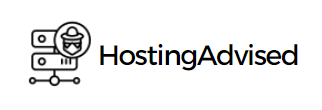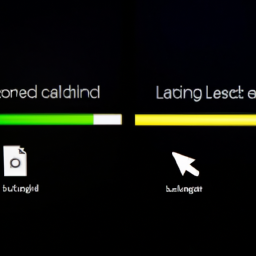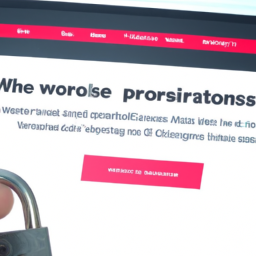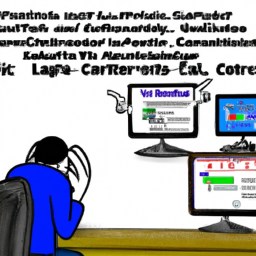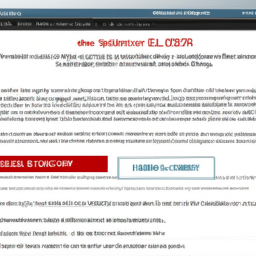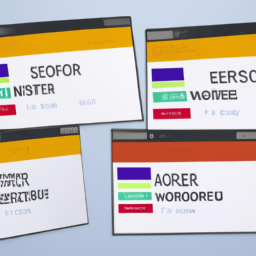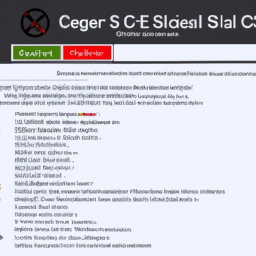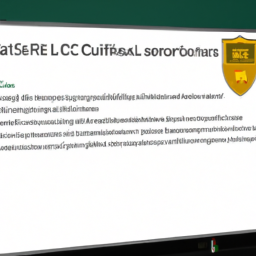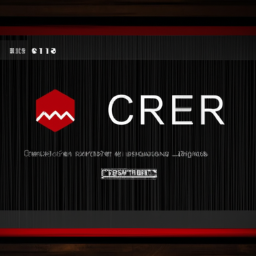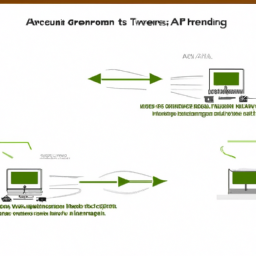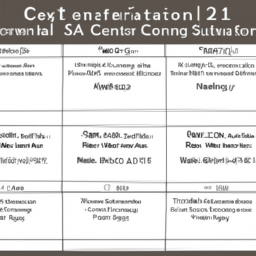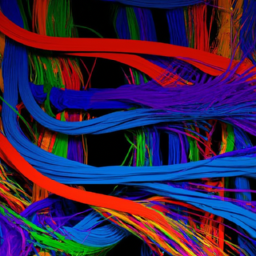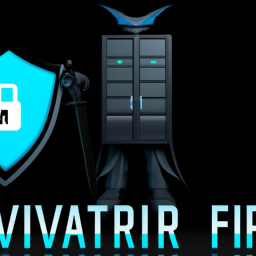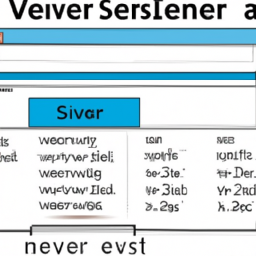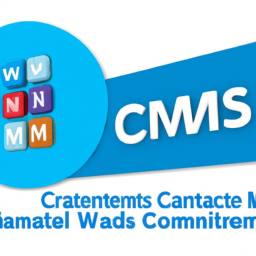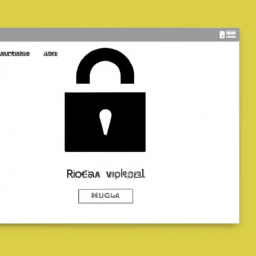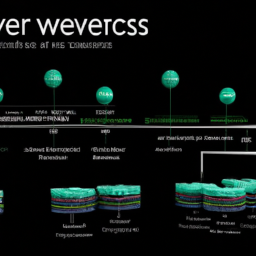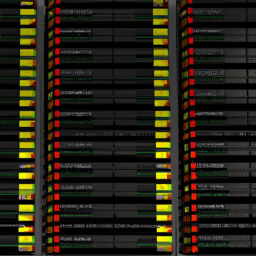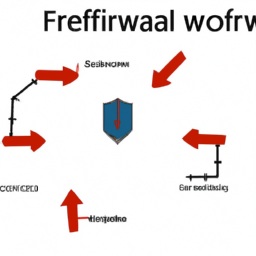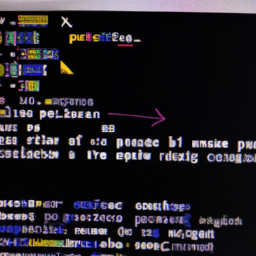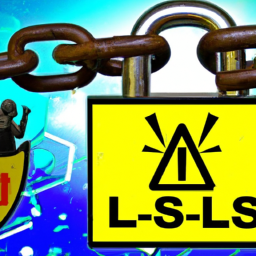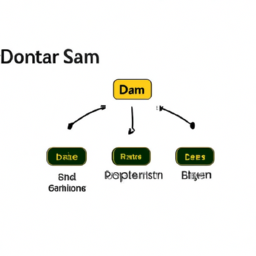Are you tired of waiting forever for a website to load? We’ve all experienced the frustration of a slow-loading website, and it’s not just annoying—it can also have a significant impact on user experience and conversion rates. In fact, studies have shown that even a one-second delay in page load time can result in a 7% decrease in conversions.
Imagine this: you’re at a busy restaurant, eagerly waiting for your food to arrive. The minutes tick by, and you start to grow impatient. Your stomach grumbles, and your frustration builds. Just like waiting for your meal, waiting for a website to load can leave you feeling hungry for information and unsatisfied with the overall experience.
But fear not! In this comprehensive guide, we’ll show you how to troubleshoot and fix slow website loading times. From checking your hosting provider to optimizing images and minimizing HTTP requests, we’ll delve into the technical details and provide you with actionable solutions to ensure your website loads in a flash.
So let’s dive in and make sure your visitors never have to wait for their online meal again.
Key Takeaways
- Slow website loading times can significantly impact user experience and conversion rates, with even a one-second delay in page load time leading to a 7% decrease in conversions.
- Hosting provider performance should be checked and analyzed to troubleshoot slow loading times.
- Optimization techniques such as compressing images, implementing lazy loading, and minimizing HTTP requests can greatly improve website performance.
- Enabling browser caching, using caching plugins or headers, optimizing code and database queries, and utilizing content delivery networks (CDNs) are effective strategies to enhance loading speed and user experience.
Check Your Website’s Hosting Provider
Before jumping to conclusions about your slow website loading times, it’s crucial to investigate and assess the performance of your current hosting provider.
Checking website security and analyzing website traffic are essential steps in troubleshooting slow loading times. Start by examining the security measures implemented by your hosting provider. Ensure that they have robust firewalls, SSL certificates, and regular malware scans in place to protect your website from potential threats.
Additionally, analyze your website traffic to identify any unusual spikes or patterns that may be causing the slow loading times. This data can help you determine if your hosting provider is equipped to handle the volume of visitors accessing your site.
Once you have assessed your hosting provider, you can move on to optimizing your images for faster loading speeds.
Optimize Your Images
To enhance your audience’s experience, make sure to optimize your images. Image optimization is a crucial step in troubleshooting slow website loading times. By reducing the file size of your images through image compression techniques, you can significantly improve your website’s performance. Additionally, implementing lazy loading can further enhance the loading speed of your website. Lazy loading allows images to load only when they are visible on the screen, reducing the initial load time. To implement image compression and lazy loading, you can utilize various tools and plugins available, such as Smush and Lazy Load by WP Rocket. By optimizing your images, you can minimize the time it takes for your website to load and create a smoother browsing experience for your audience. This optimization technique will be further complemented by minimizing HTTP requests, as discussed in the next section.
Minimize HTTP Requests
You’ll want to cut down on those pesky HTTP requests if you really want your website to fly. One way to do this is by optimizing your CSS and minimizing JavaScript.
CSS files can become bloated and contain unnecessary code, causing additional HTTP requests. Take the time to remove any unused CSS rules and consolidate multiple CSS files into one. This will reduce the number of requests needed to load your website.
Similarly, JavaScript files should be minimized and combined whenever possible. This will reduce the file size and the number of requests needed to fetch them. By optimizing CSS and minimizing JavaScript, you can significantly improve the loading speed of your website.
Speaking of optimizing, the next step is to enable browser caching, which will further enhance your website’s performance.
Enable Browser Caching
To optimize your website’s loading time, you should enable browser caching. By setting expiration dates for static resources, such as images and CSS files, browsers can store them locally, reducing the need to fetch them from the server on subsequent visits.
You can achieve this by using caching plugins or adding caching headers to your server settings, allowing browsers to efficiently retrieve and display cached content.
Set expiration dates for static resources to allow browsers to store them locally
By setting expiration dates for static resources, your website can leverage the browser’s ability to store them locally, resulting in improved loading times. This optimization technique is crucial for reducing latency and enhancing user experience.
Here’s how it works:
-
Specify the expiration date for each static resource, such as images, CSS files, and JavaScript files.
-
When a user visits your website, the browser checks if it already has a local copy of the resource based on its expiration date.
-
If the resource is still valid, the browser retrieves it from the local cache instead of making a new request to the server.
-
This significantly reduces the time it takes to load the page, as the browser doesn’t need to wait for the server to deliver the resource.
To further enhance your website’s performance, the next step is to use caching plugins or add caching headers to your server settings.
Use caching plugins or add caching headers to your server settings
To further optimize your website’s loading speed, you can explore two options: caching plugins or adding caching headers to your server settings.
Caching plugins are user-friendly tools that allow you to easily enable caching on your website. They automatically store frequently accessed data, such as images and CSS files, in the user’s browser cache, reducing the need for the browser to request the same data repeatedly. However, some caching plugins can be resource-intensive and may slow down your server.
On the other hand, caching headers are server settings that instruct the user’s browser to cache specific resources for a set period of time. This method requires more technical knowledge to implement effectively, but it offers more control over caching settings and can be more efficient. To implement caching headers effectively, you need to configure your server to send the appropriate HTTP headers, such as ‘Cache-Control’ and ‘Expires’.
By using caching plugins or caching headers, you can significantly improve your website’s loading speed.
Now, let’s dive into the next section and learn how to reduce server response time.
Reduce Server Response Time
To reduce server response time, you need to optimize your website’s code and database queries. This involves identifying and eliminating any unnecessary code or queries that may be slowing down the server.
Additionally, using a content delivery network (CDN) can greatly improve server response time by distributing your website’s content across multiple servers, reducing the load on any single server.
By implementing these strategies, you can ensure that your website responds quickly and efficiently to user requests.
Optimize your website’s code and database queries to improve server response time
One effective way to enhance your website’s performance is by optimizing its code and database queries, resulting in improved server response time. Optimizing your website’s code involves various techniques such as minimizing unnecessary code, removing unused plugins or scripts, and optimizing images and other media files. Additionally, optimizing database queries involves reducing the number of queries, optimizing their structure, and indexing frequently accessed data. By optimizing your website’s design and reducing external dependencies, you can significantly improve its load time and overall performance.
To evoke emotion in the audience, consider the following table:
| Issue | Solution | Emotion |
|---|---|---|
| Bloated code | Minify and compress code | Frustration |
| Unoptimized images | Optimize and compress images | Impatience |
| Excessive database queries | Optimize queries and implement caching | Annoyance |
By implementing these optimizations, you can enhance your website’s performance and provide a better user experience. In the subsequent section, we will explore the benefits of using a content delivery network (CDN) to distribute your website’s content across multiple servers, further improving its loading times.
Use a content delivery network (CDN) to distribute your website’s content across multiple servers
Using a content delivery network (CDN) can be likened to spreading your website’s content across multiple servers, enabling faster access and an improved user experience.
A CDN is a network of servers strategically located around the world to reduce the latency between the user and the content they are trying to access. When a user requests content from your website, the CDN selects the server closest to the user and delivers the content from there, minimizing the distance the data has to travel. This significantly reduces the server response time and improves the website’s loading speed.
CDNs also help distribute the traffic load, preventing a single server from becoming overwhelmed. By using a CDN, you can benefit from faster website speeds, reduced server load, and better scalability.
Now, let’s transition into the next section and discuss how to monitor and audit your website’s performance.
Monitor and Audit Your Website
To ensure optimal website performance, you need to regularly monitor your website’s loading times using tools such as Google PageSpeed Insights. By doing so, you can identify any potential bottlenecks or areas of improvement that may be affecting your website’s speed.
Additionally, conducting regular audits will help you identify and fix any issues that may be slowing down your website, ensuring a seamless user experience.
Regularly monitor your website’s loading times using tools like Google PageSpeed Insights
By regularly checking your website’s loading times with tools like Google PageSpeed Insights, you can easily monitor and improve its performance. This allows you to stay on top of any issues that may be affecting your website’s speed and take necessary actions to address them promptly.
Google PageSpeed Insights provides valuable insights into your website’s performance on different devices, allowing you to identify any discrepancies and make necessary optimizations. You can test your website’s loading times on various devices, such as smartphones, tablets, and desktop computers, to ensure a consistently smooth user experience across different platforms.
Regular monitoring of your website’s loading times will help you identify any bottlenecks or areas for improvement, enabling you to optimize your website’s performance and deliver a faster and more efficient experience for your users. By doing so, you can ensure that your website is running at its best and providing a seamless browsing experience.
In the next section, we will discuss how to conduct regular audits to identify and fix any issues that may be slowing down your website.
Conduct regular audits to identify and fix any issues that may be slowing down your website
Regularly conducting website audits is like giving your website a thorough check-up to uncover any hidden issues that may be hindering its performance and slowing down user experience. These regular audits are essential for maintaining optimal website performance.
By analyzing various aspects of your website, such as its code, server configuration, and content, you can identify and fix any issues that may be slowing it down. This includes optimizing images, minimizing CSS and JavaScript files, and reducing server response time.
Regular audits also help you identify any broken links or outdated plugins that may be negatively impacting your website’s performance. Additionally, conducting audits allows you to assess your website’s overall functionality and identify any potential security vulnerabilities.
By taking the time to regularly audit your website, you can ensure that it is running smoothly and providing a positive user experience.
Frequently Asked Questions
How can I determine if my website’s slow loading times are due to my hosting provider?
To determine if your website’s slow loading times are due to your hosting provider, you need to analyze two key factors:
- The impact of your hosting provider and the efficiency of your website code.
Firstly, check if your hosting provider is experiencing any performance issues or if they offer sufficient resources for your website’s needs.
Secondly, assess your website code’s efficiency by optimizing images, minimizing HTTP requests, and using caching techniques.
By evaluating these aspects, you can pinpoint the root cause of the slow loading times.
Are there any specific image optimization techniques that can help improve my website’s loading speed?
To enhance your website’s loading speed, there are certain image optimization techniques you can employ.
Firstly, image compression reduces the file size without sacrificing quality, resulting in faster loading times.
Additionally, utilizing lazy loading allows images to load only when they become visible to the user, reducing initial loading time.
By implementing these techniques, you can significantly improve your website’s loading speed and enhance user experience.
How can I minimize the number of HTTP requests made by my website?
To minimize the number of HTTP requests made by your website, there are a few techniques you can implement.
Firstly, you can reduce the number of database queries by optimizing your database structure and queries. This can help consolidate multiple requests into a single one.
Additionally, you can implement lazy loading, which loads content only when it’s needed, reducing the initial number of requests.
These strategies can significantly improve your website’s loading speed.
What is browser caching and how can I enable it to enhance my website’s loading times?
To enhance your website’s loading times, enabling browser caching is crucial. Browser caching is like having a well-stocked pantry for your website files. When a visitor lands on your site, their browser stores some files locally, so when they return, the browser can quickly retrieve the stored files instead of downloading them again.
This results in improved website performance optimization, reducing the time it takes to load your pages and delighting your users.
Are there any strategies to reduce server response time and improve my website’s performance?
To reduce server response time and optimize your website’s performance, there are several strategies you can implement.
First, ensure that your server hardware and software are up to date and properly configured.
Next, optimize your database queries and minimize the use of server-side scripts.
Additionally, implement caching mechanisms, compress your website’s files, and use a content delivery network (CDN) to distribute content more efficiently.
Finally, consider using a load balancer to distribute traffic evenly across multiple servers.
Conclusion
In conclusion, troubleshooting slow website loading times requires a comprehensive approach. By checking your website’s hosting provider, optimizing images, minimizing HTTP requests, enabling browser caching, reducing server response time, and monitoring and auditing your website, you can address the key factors that contribute to sluggish loading speeds.
Remember, a slow website can leave visitors feeling like they’re walking through molasses, hindering their experience and potentially driving them away. So, take the necessary steps to ensure your website loads swiftly, like a well-oiled machine, leaving users impressed and engaged.
